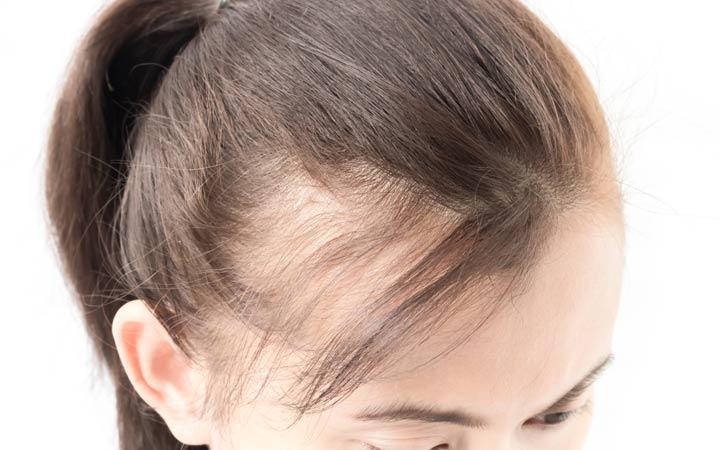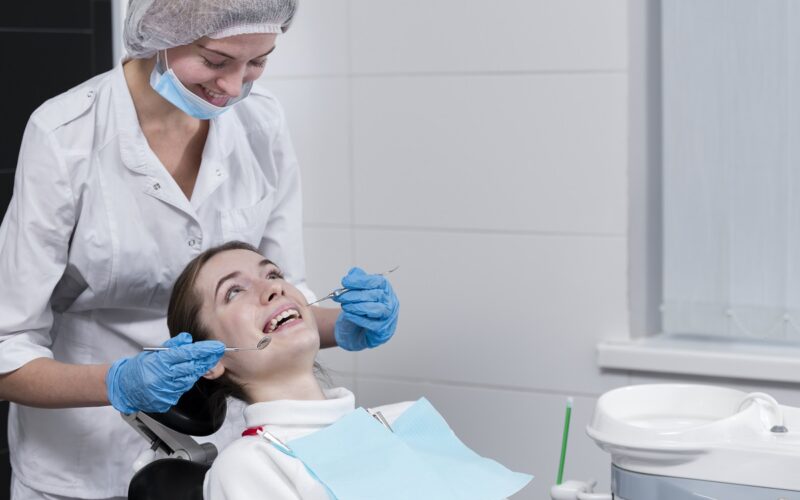
Male Pattern Baldness (MPB) is not the only cause of hair loss in humankind; it also affects women in the form of Female Pattern Alopecia. Female pattern hair loss (FPHL), also known as androgenetic alopecia, affects around half of all women and can be inherited from either side of the patient’s family tree.
While hair loss is usually thought to be a condition that exclusively affects males, there are many incidences of female hair loss that affect women all over the world. While traction alopecia is commonly associated with excessive style, braiding, bleaching, and relaxing in women, hair loss can also be caused by genetics, medicine, or disease.
Hair loss may pass down the generations without necessarily affecting the next of kin. In most situations, though, someone in the family will experience some degree of hair thinning at some time in their lives. Hair loss can begin as early as late adolescence in patients with this illness, and it generally worsens after menopause.
When you lose your hair as a woman, it can damage not just your scalp, but also your self-esteem and cause insecurity. This is why the FUE hair transplant process can be customized to address female hair loss successfully, allowing you to obtain the results you want.
Women’s alopecia is frequently neglected as a serious aesthetic issue. The psychological impacts of hair loss are generally more severe in women than in males. Modern hair transplantation has enabled effective hair restoration in many cases of female alopecia that were previously untreatable with earlier methods.
Regrowing Your Hair Naturally with Female Hair Transplant
The good news is that there is a remedy thanks to modern medicine. Ladies who are concerned by this issue quickly find out that hair transplants aren’t just for guys, despite popular belief. A growing number of women are opting for a female hair transplant procedure.
Female hair loss can be treated by hair transplantation. This syndrome is characterized by de-hydro testosterone hypersensitivity at the hair follicle level in females. The result is a general thinning of the hair, although the front hairline is unaffected.
Many women who are experiencing hair loss would like to discover a thorough solution to their condition. With this in mind, it’s critical to get professional assistance to figure out what’s causing the problem and how to solve it. Some prefer a full female hair transplant, while others require forehead reduction surgery. The process will help you appear better naturally while also ensuring that you have a full head of hair. Hair transplantation in females is a successful procedure overall but if your are only concerned with your hairline, then forehead reduction might be the best option for you. Hair transplantation has come a long way in the last two decades, and it is now possible to get natural results with no visible scars. Especially cosmetic surgery clinics in Turkey provide such operations at an affordable price than Australian and European countries.
Maintenance and After Care
Once you decide to go for the procedure and choose a suitable medical team, there are important points you should be explained before the procedure on what to expect and how to care following the hair transplant. The transplanted hair grows for around ten days before falling out and regrowing after three to four months. Usually, by the fifth or sixth month, you will see a big improvement. The patient must learn this ahead of time so that he or she does not get concerned about the natural sequence of events. So the hair goes into a rest phase at first, then into a growth phase after 3-4 months, and then the hair grows for as long as it was genetically intended to grow on the donor location, which is a hopeful discovery. As a result, for the first 3-4 months, the patient may not appear any better in the hair department, due to some of the existing hair, if any, on the grafted region.
You should just allow time according to your genetic pattern and be in contact with your medical team for any concerns.
Because hair loss is a degenerative disorder in which we continue to lose hair as we age, it is fairly unusual to require further grafts in the future. The transplanted hair will grow in the grafted location for as long as it was genetically designed to grow in the donor area, which is a very promising notion.





